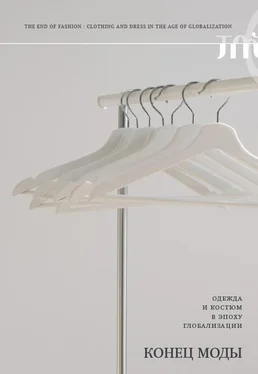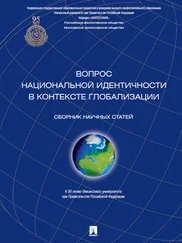Green. Ready-to-Wear. Pp. 80–86, 97–104.
Glickman L. B. Buying Power: A History of Consumer Activism in America. Chicago: Chicago University Press, 2009.
Glickman. «Make Lisle the Style». Pp. 573–608.
Hirschmann A. O. Exit, Voice, and Loyalty: Responses to Decline in Firms, Organizations, and States. Cambridge, MA: Harvard University Press, 1972.
Glickman. Buying Power. Pp. 297–310.
Sluiter. Clean Clothes.
Chessel. Women and the Ethics of Consumption. Pp. 81–98.
Кляйн Н. No Logo. Люди против брендов. М.: Добрая книга, 2008.
Bairoch P. Victoires et déboires: Histoire économique et sociale du monde du XVIe siècle а nos jours. Vol. 3. Paris: Gallimard, 1997.
Holson L.M., Abrams R. For the Trumps, «Made in U. S.A.» May Be a Tricky Label to Stitch // New York Times. 2016. December 28. www.nytimes.com/2016/12/28/business/donald-trump-ivankaclothes-global-trade-overseas-manufacturing.html (accessed 15.05.2017).
Bender D., Greenwald R. A. Sweatshop USA: The American Sweatshop in Historical and Global Perspective. New York: Routledge, 2003.
Sluiter. Clean Clothes. P. 71.
Taplin. Who Is to Blame? P. 78.
Davidson A. Economic Recovery, Made in Bangladesh? // New York Times. 2013. May 14. MM16.
Green. Ready-to-Wear; Bender, Greenwald. Sweatshop USA.
Sluiter. Clean Clothes.
Sen S., Battacharya C. B. Does Doing Good Always Lead to Doing Better? Consumer Reactions to Corporate Social Responsibility // Journal of Marketing Research. 2001. 38, no. 2. P. 240.
Taplin. Who Is to Blame? P. 76.
Lund-Thomsen P., Lindgreen A. Corporate Social Responsibility in Global Value Chains: Where Are We Now and Where Are We Going? // Journal of Business Ethics. 2014. 123, no. 1. P. 13.
Ibid. P. 12.
McAfee, Dessain, Sjöman. Zara.
Mikalsen K.-E. Nordea-sjef: Dette ville en skjorte kostet om fabrikkarbeiderne i Bangladesh skulle fatt en levelig lonn //Aftenposten. 2017. June 2. www.aftenposten.no/okonomi/Nordea-sjef-Dette-ville-en-skjortekostet-om-fabrikkarbeiderne-i-Bangladesh-skulle-fatt-en-levelig-lonn-622467b.html (accessed 02.06.2017).
Taplin. Who Is to Blame? P. 78; Rafael R. Is This Sewing Robot the Future of Fashion? // Fast Company. 2017. January 24. www.fastcompany.com/3067149/is-this-sewing-robot-the-future-of-fashion (accessed 02.06.2017).
Godley. Selling the Sewing Machine. Pp. 266–314.
Hoskins T. Robot Factories Could Threaten Jobs of Millions of Garment Workers // Guardian. 2016. July 16. www.theguardian.com/sustainable-business/2016/jul/16/robot-factories-threaten-jobsmillions-garment-workers-south-east-asia-women (accessed 02.06.2017).
Taplin. Who Is to Blame? Pp. 76–78; Glickman. Buying Power. Pp. 294–296.
Falasca-Zamponi. Waste and Consumption. Pp. 36–39, 42–49.
Аббревиатура Y2K расшифровывается следующим образом: Y – year (год), 2 – два знака для обозначения года (из‐за которых и возник риск сбоя компьютерных систем при наступлении нового тысячелетия), K – kilo (приставка, употребляемая в системе СИ для единиц, превышающих основную единицу измерения в 1000 раз). ( Прим. пер. )
The Editors of Encyclopedia Britannica. Y2K Bug. Last modified 2017. April 20. www.britannica.com/technology/Y2K-bug (accessed 26.08.2017).
Agins T. The End of Fashion, How Marketing Changed the Clothing Business Forever. New York: Quill, 2000. P. 15.
Ibid.
Ibid. P. 14.
Vinken. Fashion Zeitgeist. P. 35.
Ibid.
Breward Ch. Foreword // Fashion Studies: Research Methods and Practices / Еd. H. Jenss. London; New York: Bloomsbury, 2016. P. xviii.
Ibid.
Buckley Ch., Clark H. Fashion and Everyday Life, London and New York. London; New York: Bloomsbury, 2017. P. 235.
Breward. Foreword. P. xvii.
Edelkoort L. Anti_Fashion: A Manifesto for the Next Decade. Paris: Trend Union, 2014.
Krauss R. E. Sculpture in the Expanded Field // The Originality of the Avant-Garde and Other Modernist Myths. Cambridge, MA: The MIT Press, 1985. P. 279.
Цит. по: Breward. Foreword. P. xix.
Bugg J. Fashion at the Interface: Designer-Wearer-Viewer // Fashion Practice. 2009. 1, no. 1. P. 10.
Ibid. Р. 10–11.
См.: Vänskä A., Clark H. (eds) Fashion Curating: Critical Practice in the Museum and Beyond. London; New York: Bloomsbury, 2017.
Bugg. Fashion at the Interface. P. 13.
См., например: Taylor L. Establishing Dress History. Manchester; New York: Manchester University Press, 2004; Steele V., Palmer A. (eds) Exhibitionism (Special Issue). Fashion Theory: The Journal of Dress, Body & Culture. 2008. Vol. 12.1; Anderson F. Museums as Fashion Media // Fashion Cultures: Theories, Explorations and Analysis / Еd. S. Bruzzi. London; New York: Routledge, 2000. Pp. 371–389.
Žiźek S. Living in the End Times. London; New York: Verso, 2010.
Buckley Ch., Clark H. In Search of the Everyday: Museums, Collections, and Representations of Fashion in London and New York // Fashion Studies: Research Methods and Practices / Еd. H. Jenss. London; New York: Bloomsbury, 2016. P. 27.
Clark J., De La Haye A. Exhibiting Fashion: Before and after 1971. New Haven, CT: Yale University Press, 2014.
De La Haye A. Vogue and the V&A Vitrine // Fashion Theory: The Journal of Dress, Body & Culture. 2006. Vol. 10.1/2. Pp. 132–133.
Breward Ch. Between the Museum and the Academy: Fashion Research and Its Constituencies // Fashion Theory: The Journal of Dress, Body & Culture. 2008. Vol. 12.1. P. 91. На русском языке: Бруард К. Между музеем и академией: исследования в области моды и «заинтересованные стороны» // Теория моды: одежда, тело, культура. 2006. № 29. С. 175–188. 2006. № 29. С. 175–188.
Читать дальше
Конец ознакомительного отрывка
Купить книгу







![Игорь Иванов - Внешняя политика России в эпоху глобализации [Статьи и выступления]](/books/424087/igor-ivanov-vneshnyaya-politika-rossii-v-epohu-globa-thumb.webp)




